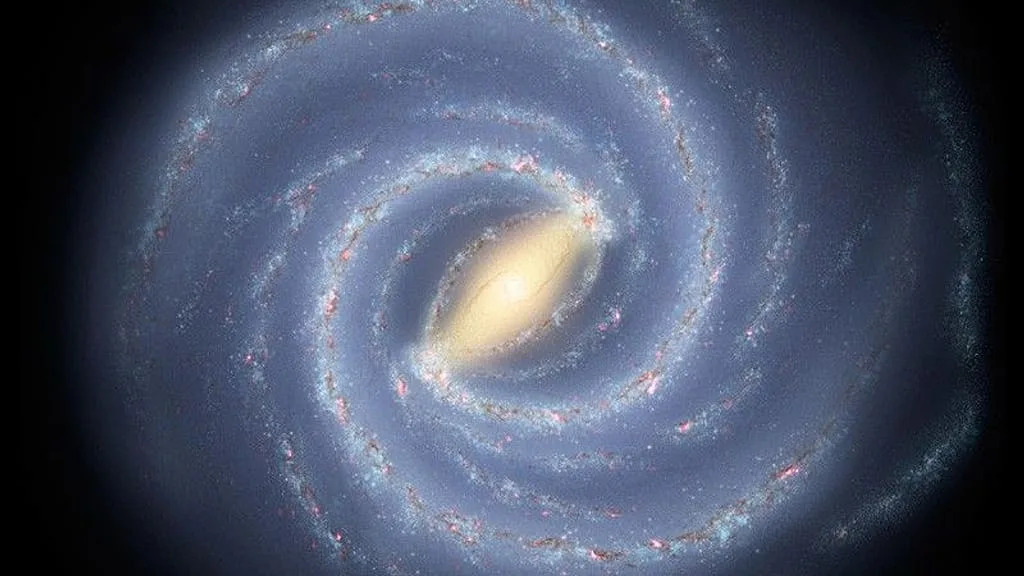Science
Scientists Unveil AI-Enhanced Milky Way Model Transforming Astronomy

A groundbreaking simulation leveraging artificial intelligence has provided scientists with an unprecedented view of the Milky Way’s evolution. This new model tracks over **100 billion individual stars** over a span of **10,000 years**, achieving a level of detail previously unattainable in astrophysics. Traditionally, simulations grouped stars into larger clusters, obscuring the finer-scale physics that dictate the growth and transformation of galaxies. The latest method marks a significant departure from these earlier techniques, paving the way for more accurate astrophysical research.
AI-Powered Insights into Galactic Evolution
The project, spearheaded by researcher **Keiya Hirashima** at the **RIKEN Center for Interdisciplinary Theoretical and Mathematical Sciences (iTHEMS)** in Japan, involved collaboration with experts from the **University of Tokyo** and the **University of Barcelona**. The team recently presented their findings at **SC’25**, an international conference focusing on high-performance computing and analysis.
To tackle the complexities of galactic modeling, Hirashima’s team integrated a deep learning surrogate model. This AI was trained on high-resolution simulations of supernova behavior, enabling it to predict gas dispersion in the aftermath of an explosion. This innovation allows the primary simulation to advance significantly faster while maintaining the intricate details of individual supernova events. The approach was validated using data from Japan’s **Fugaku supercomputer** and the **Miyabi system** at the University of Tokyo.
Efficiency and Future Applications
The result is a comprehensive Milky Way simulation that achieves true individual-star resolution with remarkable efficiency. The simulation can now model **one million years** of galactic evolution in just **2.78 hours**, meaning a full **billion years** of history can be simulated in approximately **115 days** instead of the previous estimate of **36 years**.
Hirashima emphasized the broader implications of their work, stating, “This achievement shows that AI-accelerated simulations can move beyond pattern recognition to become a genuine tool for scientific discovery.” The research indicates that similar methodologies could enhance simulations across various fields, including cosmic structure formation, black hole accretion, and even Earth system modeling.
As the team looks to the future, they aim to further scale their technique and explore its potential applications in environmental science. This milestone not only contributes to our understanding of the Milky Way but also represents a pivotal shift in how computational sciences can harness AI to address complex multi-physics problems.
-

 Politics2 weeks ago
Politics2 weeks agoSecwepemc First Nation Seeks Aboriginal Title Over Kamloops Area
-

 World4 months ago
World4 months agoScientists Unearth Ancient Antarctic Ice to Unlock Climate Secrets
-

 Entertainment4 months ago
Entertainment4 months agoTrump and McCormick to Announce $70 Billion Energy Investments
-

 Lifestyle4 months ago
Lifestyle4 months agoTransLink Launches Food Truck Program to Boost Revenue in Vancouver
-

 Science4 months ago
Science4 months agoFour Astronauts Return to Earth After International Space Station Mission
-

 Technology3 months ago
Technology3 months agoApple Notes Enhances Functionality with Markdown Support in macOS 26
-

 Top Stories1 month ago
Top Stories1 month agoUrgent Update: Fatal Crash on Highway 99 Claims Life of Pitt Meadows Man
-

 Sports4 months ago
Sports4 months agoSearch Underway for Missing Hunter Amid Hokkaido Bear Emergency
-

 Politics3 months ago
Politics3 months agoUkrainian Tennis Star Elina Svitolina Faces Death Threats Online
-

 Politics4 months ago
Politics4 months agoCarney Engages First Nations Leaders at Development Law Summit
-

 Technology4 months ago
Technology4 months agoFrosthaven Launches Early Access on July 31, 2025
-

 Top Stories3 weeks ago
Top Stories3 weeks agoFamily Remembers Beverley Rowbotham 25 Years After Murder











